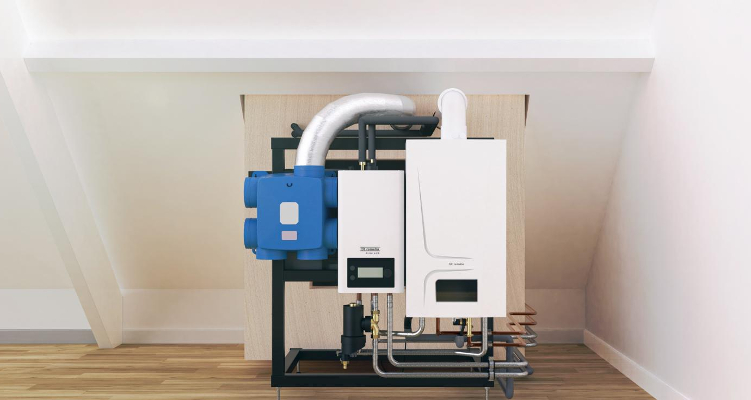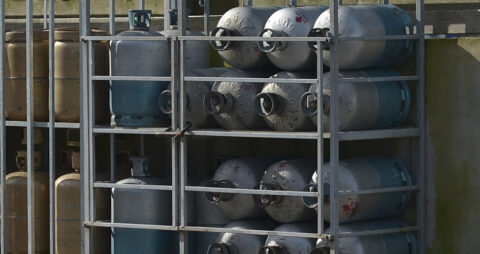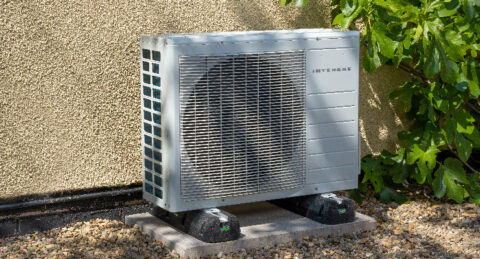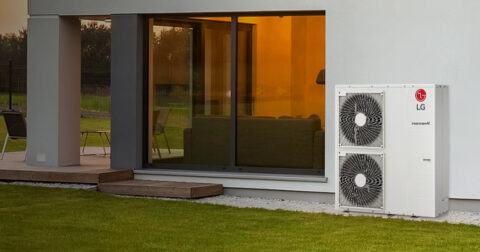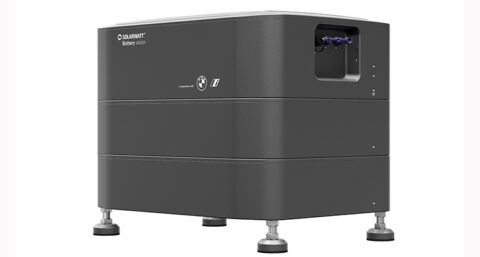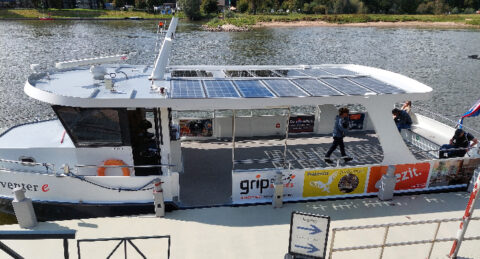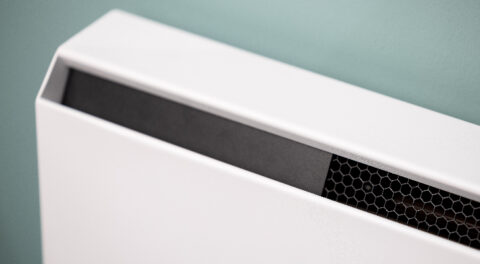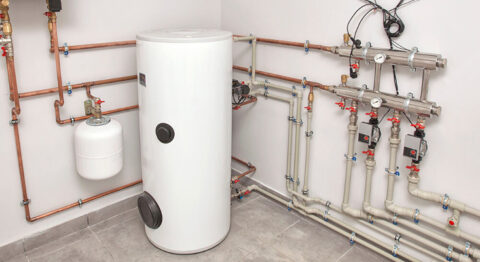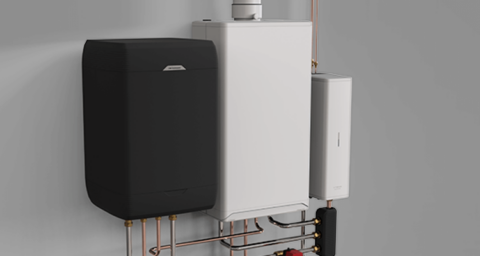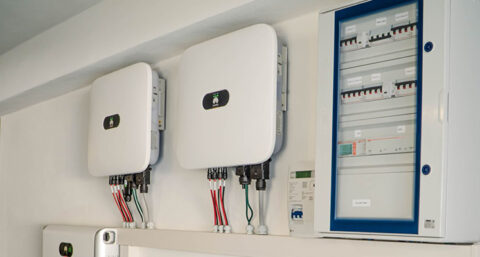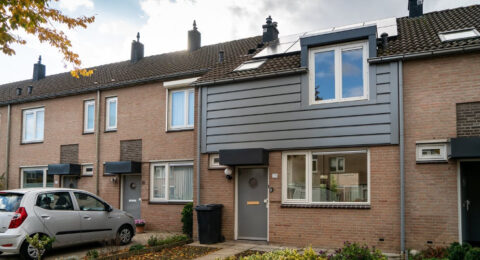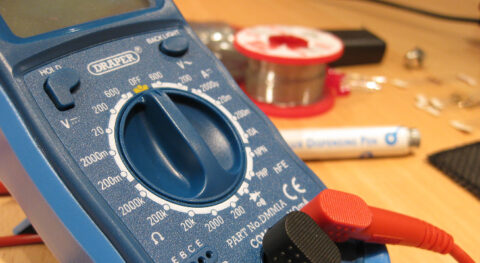The advantages that apply to precast in general also apply when installing a heat pump. Think shorter lead times, less chance of assembly errors, lower failure costs, fewer transport movements, working under conditioned conditions in the company's own workshop and easier serial installation. How can you install more heat pumps in less time?
Heat pump in the roof
In both new construction and existing construction, you quickly run into limitations and challenges in terms of noise requirements, available space and sometimes the aesthetic aspect, or appearance of the outdoor unit. This is easily solved because nowadays an outdoor unit can increasingly be integrated seamlessly into the roof, thanks to the prefab indak construction.
No one sees this outdoor unit, there is often plenty of free space on the roof, and the noise level decreases dramatically. Thanks to its design and compact dimensions, an indak construction looks suspiciously like a skylight, roof hatch, or solitary solar panel to outsiders. In short, very inconspicuous and discreet. In fact, it protrudes only about fifteen inches above the roof.

All piping is on the underside, keeping it out of sight and also providing more work space. A prefab indak construction is quick and easy to install. As an installer, you thus need to perform far fewer refrigeration operations. The construction can be matched to multiple heat pump models and a wide range of roof pitches.
Rooftop heat pump
But if you integrate a heat pump into the roof, then of course you lose a lot of space in the attic. If that's not an option, you can also place the outdoor unit or even a complete monoblock in a housing on the roof. This makes the whole thing look like a beautifully designed chimney and can be installed on either a flat roof or a sloping surface. A universal solution that can be combined with virtually any heat pump. The maximum capacity you can achieve with this depends, among other things, on the manufacturer and type of housing.

A housing on the roof not only looks elegant, it also immediately protects the heat pump from all kinds of weather and noise is reduced to often 10 dB(A) or less. For installation, service and maintenance, the outdoor unit can be made easily accessible via an optional service hatch. So that the installer does not have to climb a ladder onto the roof. If necessary, the heat pump can also be pre-installed in the casing.
Piping board
Installing a heat pump can be quite time-consuming. Especially in serial housing construction, or similar installations in general, a lot can be gained by working with prefabricated piping panels. Pipes, fittings and possibly other components can then be pre-assembled in the workshop in the most intelligent and efficient way. It can then be transported and installed in one go at a desired time.

Pipe signs can be fully customized and optimized for specific locations or certain types of homes. You can make sure that they take up as little space as possible, but also, for example, make them fit exactly for an otherwise rather awkward spot. Where necessary, a left and right version can even be made. Think mirrored homes.
A retractable pipe board that you can push aside as soon as an installer needs access to it is very handy for maintenance and repairs. Especially in tight spaces, where it is always a challenge to fit everything in in a convenient way and still be able to access it afterwards.
Installation Frame
With several heat pumps you can use an installation frame. The big advantage is that this frame can be installed at an early stage of the building shell. This allows you to perform an enormous amount of installation work without the costly heat pump having to be there right at that early stage. As a result, it cannot be damaged or even stolen.
An installation frame is a kind of bracket that you attach to the wall and to which you connect the necessary piping. Thanks to the built-in valves, the entire installation can already be pressurized and tested. In this way, the house is optimally prepared for the arrival of the heat pump at a later date.
In an advanced stage of construction, for example just before completion, all you have to do is slide the indoor unit onto the frame. Thanks to wheels, you effortlessly drive the heat pump over the frame, secure it to it, connect the piping and carry out the remaining installation steps. After that, the heat pump can be put into operation immediately. A relatively simple job that takes very little time. So you can complete an entire row of homes in a short time with ease.
Skid
A skid, usually a steel frame or casing, allows you to fully assemble a heat pump including required components in the workshop. After which you transfer everything to the desired location in one go. Because you can build a skid very efficiently and as you see fit, it usually requires less floor space. Which simultaneously leaves more space for maintenance and service.
In series production, such an assembled heat pump is also ideal, as it enables uniform construction. The system always looks the same, which makes installation, service and maintenance easier and cheaper. Everyone knows exactly where they stand. Of course, with a skid all kinds of customization is and remains possible. In case of severe space constraints, however, it is often more convenient to work with a piping board.

By the way, a skid is perfectly compatible with the aforementioned housing on the roof containing an outdoor unit. Because in that case you can place the indoor unit in an in-roof skid. This is then located directly under the outdoor unit, so that the entire installation is in virtually the same place. Such a compact indoor skid is also relatively quick and easy to install. The outdoor unit is accessible via a safe passageway. There is a fixed point on the frame for fall protection.
